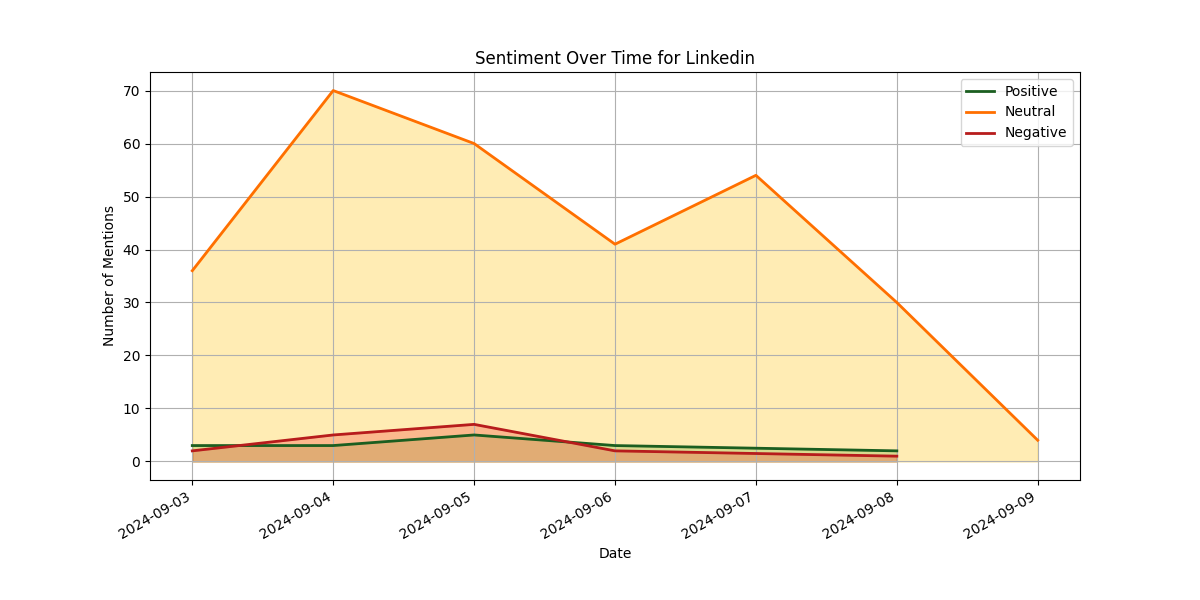What 5000 People Think about Founder Mode
September 10, 2024
The idea of “Founder Mode” has gotten a lot of attention lately. There’s been some mixed reactions across different social networks, everything from calling Paul Graham a corporate shill who ruins lives to a general excitement from the founders that he’s identified something that so many of them have experienced but have never been able to adequately describe. Oh, and memes. So many memes.

There’s three questions we had about how people perceive founder mode:
- How do different social networks perceive the idea of founder mode?
- How do the opinions of founder mode change for each network over time?
- How did people who came back from a holiday weekend affect the overall sentiment of the idea?
Specifically, we wanted to analyze all comments discussing the phrase “founder mode” and see if we can find any trends. To start off with some context, the article was posted on September 1st. There were 2 days of holidays left in the US at that point before the majority of employees went back to work.
These are the mentions by network:
Twitter / X 4569
LinkedIn 328
Threads 259
Hackernews / HN 148
Here are the breakdowns of the sentiment by network:
sentiment_label Negative Neutral Positive
Hackernews / HN 15 127 6
LinkedIn 17 295 16
Threads 25 223 11
Twitter / X 330 3963 276
Twitter had the highest amount of activity by far, so we’re able to look at the hour by hour snapshot of what people thought about founder mode:

An interesting thing to note is that early on there was clearly more positive sentiment than negative, but once the holiday weekend was over there was a spike in negative sentiment (the large troughs in the data over the first 2-3 days are likely due to missing scraped data, not inactivity). We’re speculating that this is because startup founders who would be more likely to be working the holiday weekend would have read Paul’s blog post shortly after it was posted. The spike in negativity approximately lines up with employees returning to work. We can see this a little more clearly if we view it by day instead of by hour.

That second spike in negativity on the 7th is when a fortune article came out discussing some of the data on S&P 500 companies that are still run by their founders. The result was a clear win for founder-run companies.
There’s less data on some of the other social networks, but there are still some conclusions we can draw from them. Hackernews (abv. Hn) follows a curve that is more typical of a forum, with an initial large spike as PG’s post hits the front page, then a decrease as it falls off.

The actual timestamps weren’t available for hackernews comments in the Algolia search, so we had to estimate them. That’s why there’s a large spike on the 6th rather than the 7th like you’d expect for when the fortune article came out. LinkedIn and Threads seem to lag the other social networks by a day or two.


What seems to be the case across all networks is that when there is a spike in activity, the negative sentiment spikes more aggressively than the positive, but the positive seems to have more staying power as it doesn’t decrease at the same rate as the negative. For now, there is a small but consistent group of people who think positively about founder mode.
Wondering how this applies to your business or audience? Consider:
- How might sentiment around your company announcements vary across different platforms?
- What could you learn by analyzing the social media activity of your most engaged customers or critics?
- How could tracking sentiment over time inform your marketing or PR strategies?
Our sentiment analysis API can help you uncover these insights for your own brand or industry. Whether you’re launching a new product, pivoting your business model, or just trying to understand your audience better, tracking social media sentiment can provide valuable guidance.
Ready to dive deeper into your audience’s reactions? Create an account here to start using our sentiment API and gain actionable insights for your business.